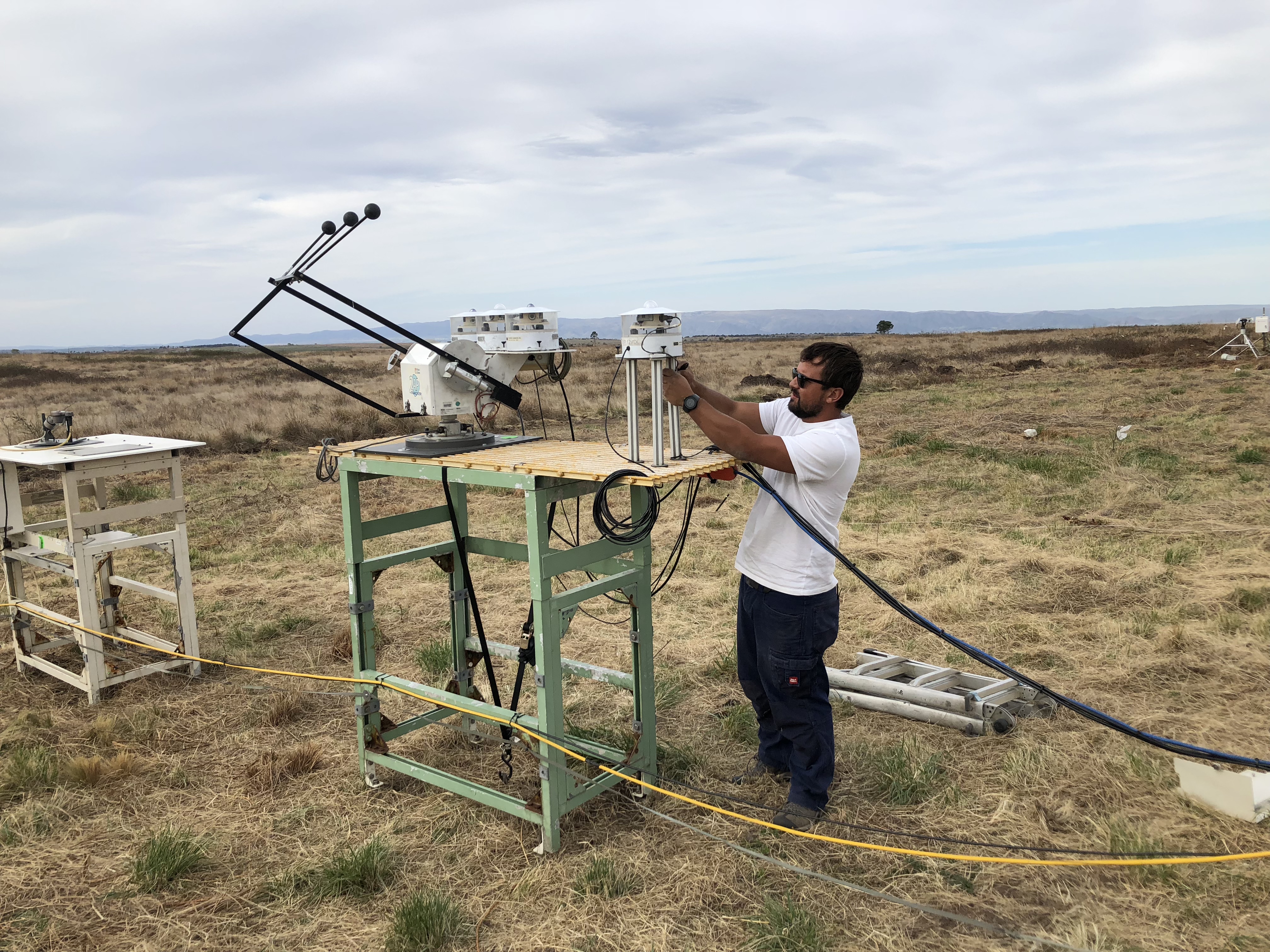Radiation Data Quality VAP Now Available for CACTI Field Campaign
Published: 17 August 2020

The Atmospheric Radiation Measurement (ARM) user facility’s longtime recommended datastream for broadband surface irradiance measurements is Data Quality Assessment for ARM Radiation Data (QCRAD). The QCRAD value-added product (VAP) is now available for the Cloud, Aerosol, and Complex Terrain Interactions (CACTI) field campaign.
QCRAD data are processed for ARM Mobile Facility CACTI operations from September 23, 2018, to May 1, 2019, in Argentina’s Sierras de Córdoba mountain range.
The QCRAD methodology uses climatological analyses of the surface radiation measurements to define reasonable limits for testing the data for unusual values. QCRAD applies multiple data quality checks, corrects for errors due to infrared loss in shortwave (SW) radiometric measurements, and calculates a best-estimate total downwelling SW irradiance value.
The QCRAD VAP produces two daily files containing 1-minute radiation measurement fields and their quality control (QC) values. The *.c2 file—the asterisk represents the datastream name—includes auxiliary information and detailed qc flags. In addition, the c2 data uses instrument-specific calibration and characterizations for infrared loss correction. The *.s2 summary file includes a simplified version of the qc flags and fewer auxiliary data values.
Scientists can use the new QCRAD data now. To share your experience—such as how you use the data and how well they work for you—or to ask a question, contact Josh Howie.
More information on QCRAD is available on the VAP web page. To access these data, go to the ARM Data Center. (Go here to request an account.)
To cite the QCRAD data, please use doi:10.5439/1227214.
Keep up with the Atmospheric Observer
Updates on ARM news, events, and opportunities delivered to your inbox
ARM User Profile
ARM welcomes users from all institutions and nations. A free ARM user account is needed to access ARM data.


















